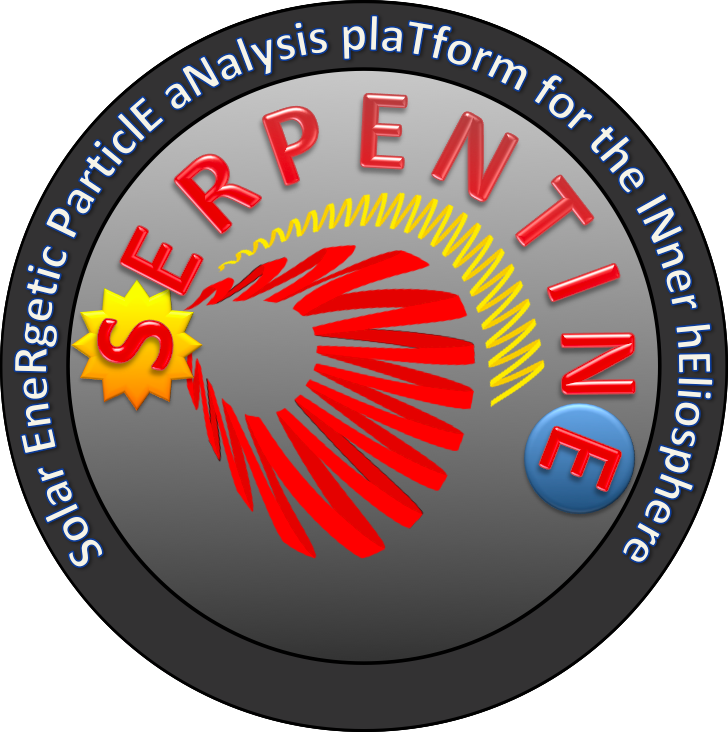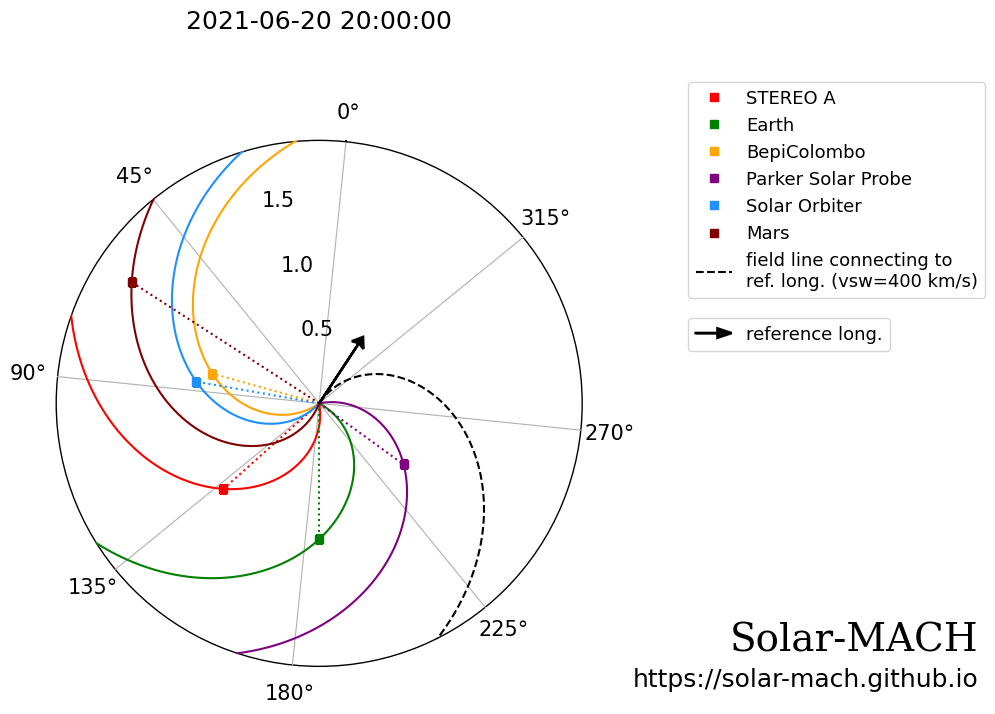The positions of the various members of our spacecraft fleet are constantly changing. When a new solar event happens, the first analysis step is to check these positions with respect to the location of solar activity. Are our observers at the right positions to detect the energetic particles? Are they well-separated so that a wide range in interplanetary space is covered? Are certain spacecraft positioned in advantageous constellations, which open up rare analysis opportunities such as radial or magnetic alignment (i.e., along the interplanetary magnetic field line)?
Our Solar-MACH tool is a multi-spacecraft longitudinal configuration plotter and perfectly suited for this purpose. It is a web app available to the whole scientific community at solar-mach.github.io. It runs on Python code and allows the user to display the positions of various spacecraft and planets in the ecliptic plane at a chosen time. It also plots the magnetic field lines (the Parker spirals) connecting these positions with the Sun, which depend on the solar wind speed.
Very useful for the analysis of multi-spacecraft events is the possibility to include a reference coordinate at the Sun that marks for example the position of a solar flare. The tool then provides not only the coordinates of all selected observers but also their separation angles with respect to this reference coordinate.
The name of the web app, Solar-MACH, stands for Solar MAgnetic Connection Haus tool. It was originally developed as a Jupyter notebook by members of the SERPENTINE project in collaboration with the ESA Heliophysics Archives USer (HAUS) group. Our new web-app version of this tool is open source and includes several advances and new functionalities. However, even more importantly, no programming or installation is needed but you can easily run it directly in a browser or even on your smartphone!

